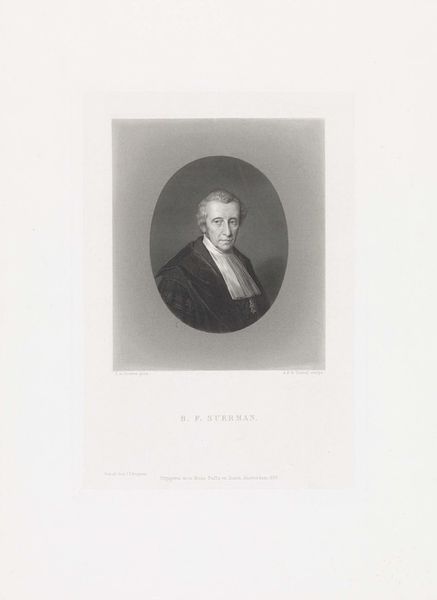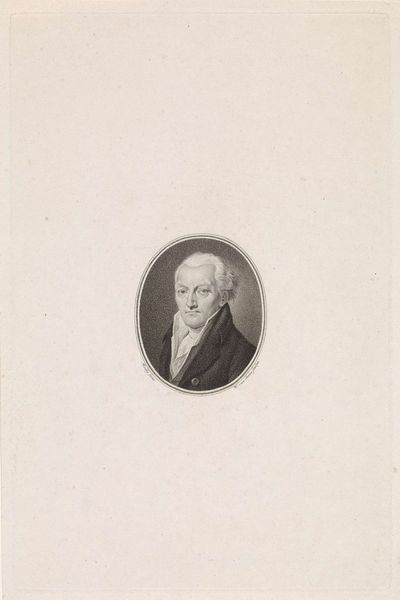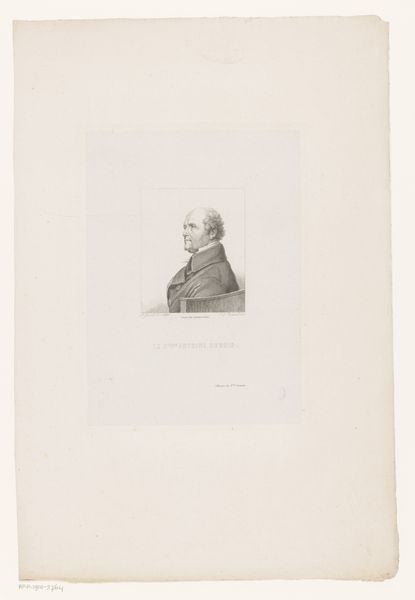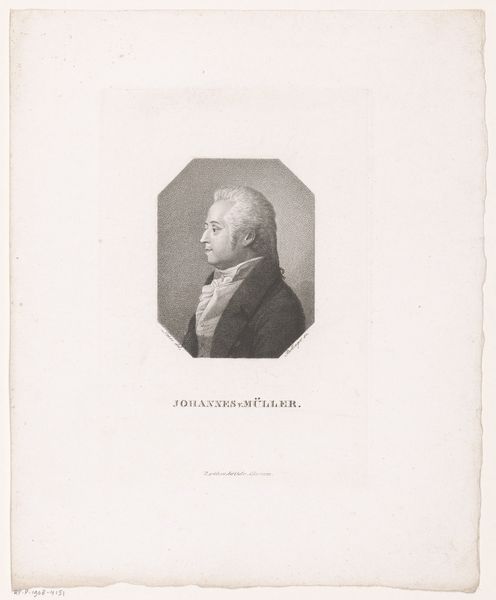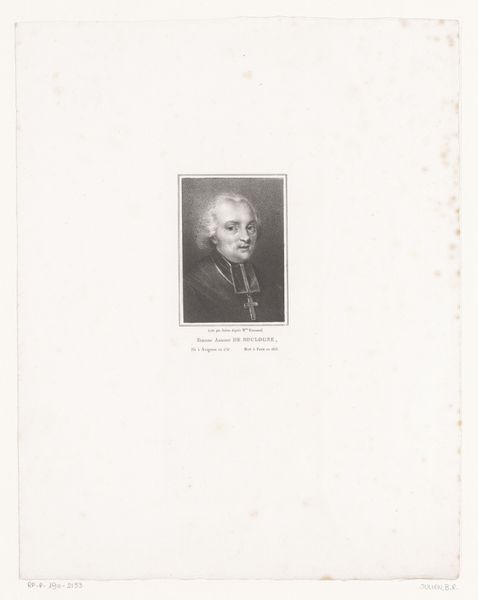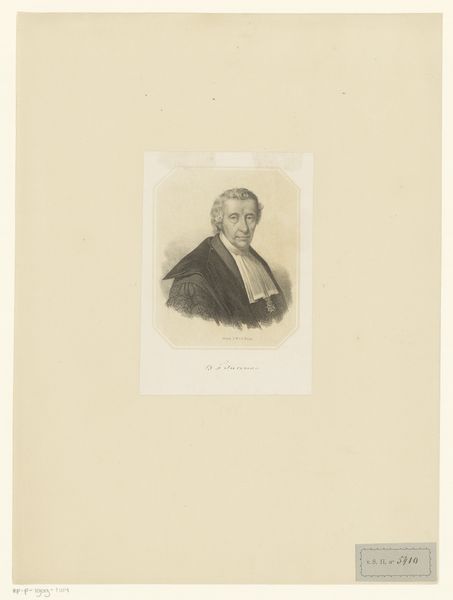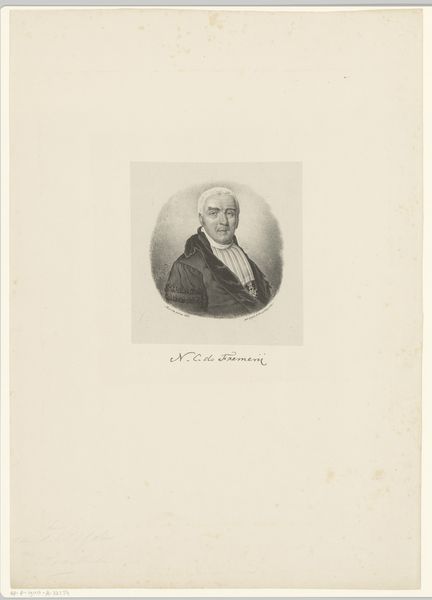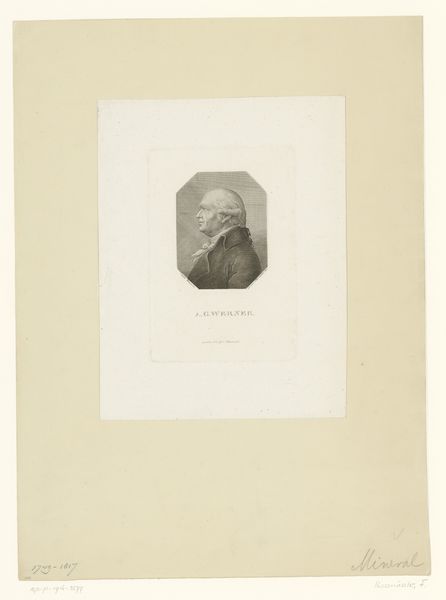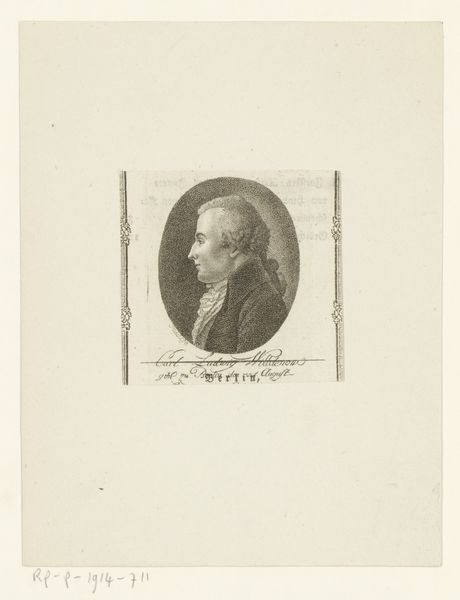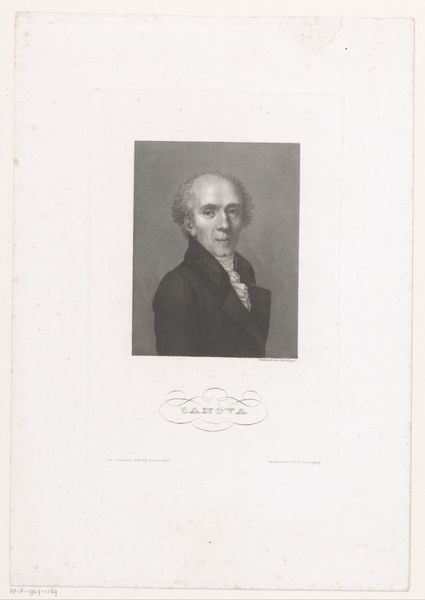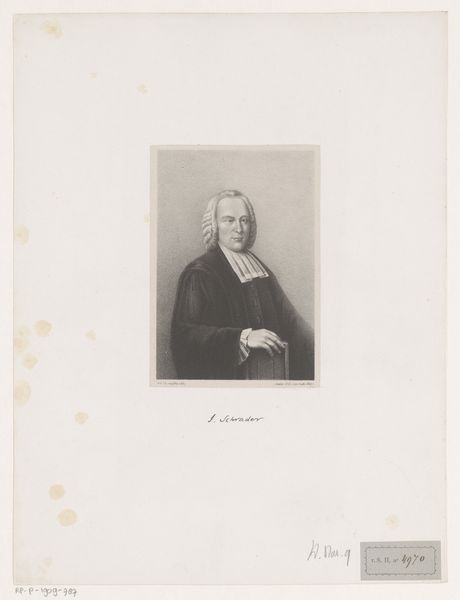
print, graphite
#
portrait
# print
#
graphite
#
realism
Dimensions: height 323 mm, width 245 mm
Copyright: Rijks Museum: Open Domain
Editor: So, here we have Willem Frederik Wehmeyer’s "Portret van Alexander Karel Willem Suerman," created in 1858. It's a print, done with graphite, in a very realist style. I’m struck by how the quality of line in the rendering gives a photographic clarity… what can you tell me about this piece? Curator: Let’s consider the means of its production: graphite, printing. This suggests accessibility, a move away from exclusive, commissioned portraiture. It speaks to a burgeoning middle class, perhaps, wanting to emulate the elite through reproducible images. Editor: That makes sense, portraits were typically for the wealthy. But why choose a print then, and not a painting? Curator: Prints offered a different kind of value, right? A wider distribution. What does the choice of graphite as a medium imply about the labor involved, compared to, say, painting? The scale and detail possible would be greatly affected, for example. How might the economics of art production in 1858 influence Wehmeyer’s decision-making? What was the societal position of the sitter himself, within this framework? Editor: Alexander Karel Willem Suerman probably had some level of social standing to warrant a portrait being made of him. Curator: Precisely. And the act of producing a portrait via printing changes its function. Does it commemorate him in the same way that a unique painted portrait would? Or does the relatively reproducible nature suggest it fulfills another role? Editor: It’s almost like propaganda then, a promotion of the individual by allowing for copies to circulate and maybe even contribute to the idea of the emerging importance of the individual during the era. I see a purpose beyond mere aesthetic representation. Curator: Exactly! We begin to unpack how the art is created through choices that reflect socioeconomic trends, more so than individual agency. I find the material conditions of its creation much more revealing than just aesthetic appreciation.
Comments
No comments
Be the first to comment and join the conversation on the ultimate creative platform.
